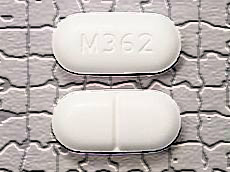 Vicodin abuse is an emerging problem in our country, and one that is showing an increasing trend. What is most disturbing about this trend is that teenagers and young adults are counted among those who use these drugs non-medically.
Vicodin abuse is an emerging problem in our country, and one that is showing an increasing trend. What is most disturbing about this trend is that teenagers and young adults are counted among those who use these drugs non-medically.
According to the National Institute on Drug Abuse’s (NIDA’s) approximately 48 million people-about 20 percent of the U.S. population-aged 12 or older had used prescription drugs for non-medical reasons in their lifetimes.
Elderly persons are particularly vulnerable to Vicodin abuse and misuse; as a group, they are prescribed more medications than their younger counterparts, placing them at higher risk for misuse, dependence, and addiction.
Accessibility to Vicodin is likely a contributing factor to this growing trend. More people are being prescribed Vicodin today, for a variety of health reasons. This increase in prescriptions means more pills in our medicine cabinets. To add to this supply, many people also are obtaining medications illegally through Web sites that do not require a physician’s prescription. With the increase in prescriptions, along with the growing accessibility to this drug, Vicodin addiction treatment is often necessary.
Once an individual seeks Vicodin addiction treatment, there are three main reasons for relapse:
1) mental and physical cravings; 2) depression; and 3) guilt associated with the moral degradation and dishonesty that becomes part of an addicts life style. These manifestations can haunt someone for years after they have sobered up and more times than not, if left untreated, will trigger a relapse. These unresolved symptoms, whether physical or mental in origin, create an underlying, low-level type of stress, which cannot be completely ignored by the addict. The addict can “just say no” a thousand times, but it only takes him saying “yes” one time to start the cycle of addiction again.
The first barrier to successful recovery from substance abuse is overcoming the mental and physical cravings for the drug of choice. Drugs, like Vicodin are broken down and filtered in the liver. There is a byproduct from this detoxification process called a Vicodin metabolite. These protein-based metabolites can and do find their way into the person’s body fat.
The body will metabolize and burn fat any time a person undergoes a life experience that causes the heart rate to speed up. Stress can do this, as can strenuous exercise or intense emotion. We all experience these things on a fairly regular basis.
When an addict experiences these life situations and their heart rate speeds up the body begins to mobilize and burn fat. The fat contains toxins or Vicodin metabolites from past alcohol and drug use. As the fat cell burns, it releases the metabolite back into the person’s blood stream.
The metabolite is a byproduct of the drug. That Vicodin metabolite is connected to the memory of the life experience in which the drug or alcohol was taken. The toxin finds its way back into the blood stream and acts as both a physical and mental reminder of the drug or alcohol consumption causing the addicted person to relapse, or start using drugs again after a period of sobriety. This will require further treatment, but the treatment must handle this bio-physical aspect of addiction.
For more information on Vicodin and Vicodin addiction treatment contact us now.
